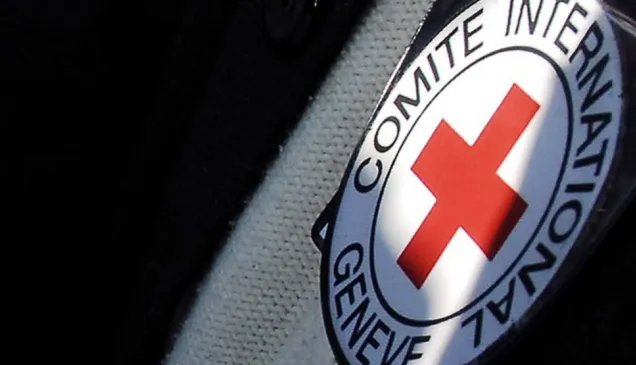The history of the emblems
The red cross and the red crescent have been at the service of humanity for more than a century - affording protection to those affected by conflict and to those assisting them. In December 2005, an additional emblem - the red crystal - was created alongside the red cross and the red crescent. The following document explains the history of the emblems.
Prior to the nineteenth century, the symbols used to identify armed forces' medical services varied according to their country of origin. The symbols were not generally well known, were rarely respected and were not entitled to any form of legal protection.
In the second half of the nineteenth century, the rapid development in firearms technology led to a dramatic increase in the number of dead and wounded during wartime.
On 24 June 1859, the War of Italian Unification was raging. Henry Dunant, a Swiss citizen, was on a private trip that took him to the town of Solferino. There, he witnessed the misery of more than 45,000 soldiers abandoned, dead or wounded, on the battlefield.
Back in Geneva, Henry Dunant started writing a book proposing drastic improvements in the assistance afforded to war victims.
In 1862, A Memory of Solferino was published. The book puts forward two proposals:
-
to set up in peacetime and in every country volunteer groups to take care of casualties in wartime;
-
to get countries to agree to protect first aid volunteers and the wounded on the battlefield;
The first proposal was the origin of the National Societies that now exist in 183 countries; and the second was the origin of the Geneva Conventions now signed by 192 States.
![]()
On 17 February 1863, a five-member committee, the future International Committee of the Red Cross (ICRC), met to study Dunant’s proposals.
One of its main objectives was to adopt a single distinctive symbol backed by the law to indicate respect for army medical services, volunteers with first aid societies and the victims of armed conflicts.
The symbol needed to be simple, identifiable from a distance, known to everyone and identical for friend and foe. The emblem had to be the same for everyone and universally recognizable.
On 26 October 1863, the first International Conference was convened. It included delegates from 14 governments.
In addition to adopting ten resolutions, which provided for the establishment of relief societies for wounded soldiers - the future Red Cross and, later, Red Crescent Societies - it also adopted the red cross on a white background as the uniform distinctive emblem.
In August 1864, the Diplomatic Conference, convened for the purpose of transforming the resolutions adopted in 1863 into treaty rules, adopted the First Geneva Convention.
Modern international humanitarian law was born.
The First Geneva Convention recognized the red cross on a white background as the single distinctive emblem.
Since the emblem was to reflect the neutrality of the armed forces' medical services and the protection conferred on them, the emblem adopted was formed by reversing the colours of the Swiss flag.
Switzerland's permanent neutral status had been firmly established in practice for several years, and had been confirmed by the Treaties of Vienna and Paris in 1815. Furthermore, the white flag was and remains a symbol of the wish to negotiate or to surrender; firing on anyone displaying it in good faith is unacceptable.
The resulting symbol had the advantage of being easily produced and recognizable at a distance because of its contrasting colours.
![]()
During the war between Russia and Turkey, the Ottoman Empire declared that it would use the red crescent on a white background in place of the red cross. While respecting the red cross symbol, the Ottoman authorities believed that the red cross was, by its very nature, offensive to Muslim soldiers. The red crescent was temporarily accepted for the duration of this conflict.
After the First World War, the 1929 Diplomatic Conference was called to revise the Geneva Conventions. The Turkish, Persian and Egyptian delegations requested that the red crescent and the red lion and sun be recognized. After lengthy discussions, the Conference agreed to recognize them as distinctive emblems in addition to the red cross; but in order to avoid any proliferation of emblems, it limited the authorization to the three countries that already used them.
The three distinctive emblems enjoy equal status under the Geneva Conventions.
Today, 151 National Societies use the red cross and 32 the red crescent.
The Diplomatic Conference convened in 1949 to revise the Geneva Conventions in the aftermath of the Second World War studied three proposals for a solution to the question of the emblems:
-
a proposal from the Netherlands for a new single symbol;
-
a proposal to revert to using a single red cross symbol;
-
a proposal from Israel for the recognition of a new emblem, the red shield of David which was used as the distinctive symbol of the Israeli armed forces’ medical services;
All three proposals were rejected.
The conference expressed its opposition to the proliferation of protective emblems. The red cross, the red crescent and the red lion and sun remained the recognized emblems.
The Islamic Republic of Iran declared that it was waiving its right to use the red lion and sun and would use the red crescent as its distinctive symbol. However, it reserved the right to return to the red lion and sun should new emblems be recognized.
Debate about the emblems continued after the 1949 decision. A number of countries and their relief societies still wanted to use national emblems, or both the cross and crescent together. By the 1990s, there was also concern about respect for the neutrality of the red cross or red crescent in certain difficult conflicts. In 1992, the then president of the ICRC called publicly for the creation of an additional emblem devoid of any national, political or religious connotation.
The 1999 International Conference of the Red Cross and Red Crescent endorsed the proposal that a joint working group of States and National Societies on the emblems should be formed to find a comprehensive and lasting solution acceptable to all parties in terms of substance and procedure.
The Working Group realized that a majority of States and National Societies were deeply attached to the red cross and red crescent emblems. Thus, the only way of finding a widely accepted solution was to adopt a third additional emblem, devoid of any national, political or religious connotation.
The design of the new emblem should enable a National Society using it to:
-
insert a cross or a crescent;
-
insert a cross and a crescent side by side;
-
insert any other symbol that is in use and has been communicated to the depositary State of the Geneva Conventions and the ICRC.
![]()
In December 2005 during the Diplomatic Conference in Geneva, the States adopted Protocol III additional to the Geneva Conventions, creating an additional emblem alongside the red cross and red crescent. The new emblem - known as the red crystal - resolves several issues that the Movement has faced over the years, including:
-
the possibility for countries unwilling to adopt the red cross or the red crescent to join the Movement as full members by using the red crystal;
-
the possibility of using the red cross and the red crescent together.
In June 2006, an International Conference of the Red Cross and Red Crescent met in Geneva to amend the statutes of the Movement to take into account the creation of the new emblem.
On 14 January 2007, the Third Additional Protocol to the 1949 Geneva Conventions entered into force (six months after the two first countries ratified it). This completes the process of establishing an additional emblem for use by Governments and the International Red Cross and Red Crescent Movement.




